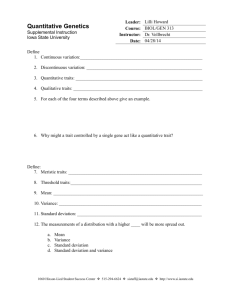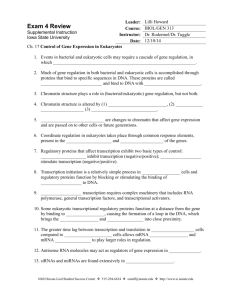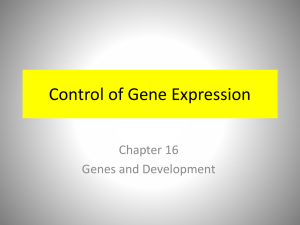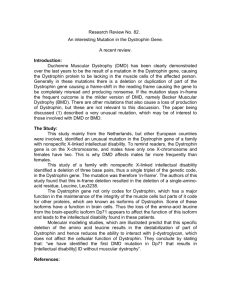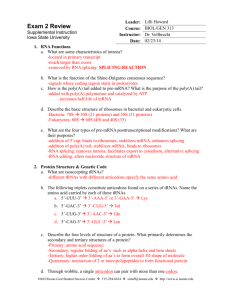10.06.14
advertisement
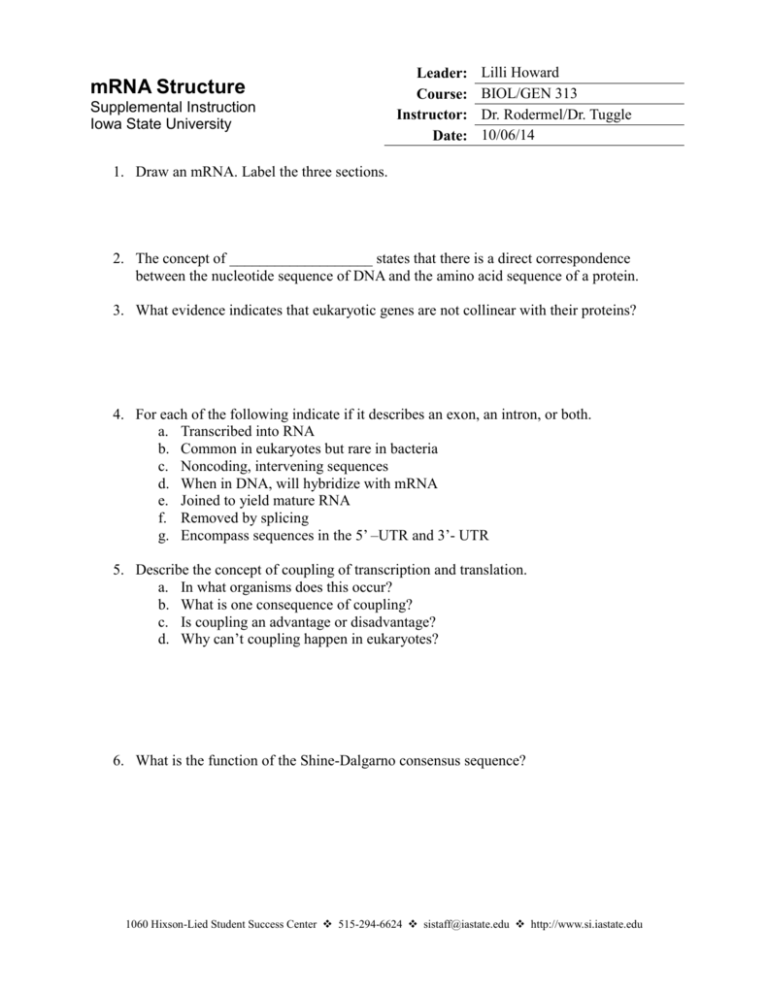
mRNA Structure Supplemental Instruction Iowa State University Leader: Course: Instructor: Date: Lilli Howard BIOL/GEN 313 Dr. Rodermel/Dr. Tuggle 10/06/14 1. Draw an mRNA. Label the three sections. 2. The concept of ___________________ states that there is a direct correspondence between the nucleotide sequence of DNA and the amino acid sequence of a protein. 3. What evidence indicates that eukaryotic genes are not collinear with their proteins? 4. For each of the following indicate if it describes an exon, an intron, or both. a. Transcribed into RNA b. Common in eukaryotes but rare in bacteria c. Noncoding, intervening sequences d. When in DNA, will hybridize with mRNA e. Joined to yield mature RNA f. Removed by splicing g. Encompass sequences in the 5’ –UTR and 3’- UTR 5. Describe the concept of coupling of transcription and translation. a. In what organisms does this occur? b. What is one consequence of coupling? c. Is coupling an advantage or disadvantage? d. Why can’t coupling happen in eukaryotes? 6. What is the function of the Shine-Dalgarno consensus sequence? 1060 Hixson-Lied Student Success Center 515-294-6624 sistaff@iastate.edu http://www.si.iastate.edu 7. Duchenne muscular dystrophy is caused by a mutation in a gene that comprises 2.5 million nucleotides and specifies a protein called dystrophin. However, less than 1% of the gene actually encodes the amino acids in the dystrophin protein. On the basis of what you now know about gene structure and RNA processing in eukaryotic cells, provide a possible explanation for the large size of the dystrophin gene. 8. Suppose that a mutation occurs in an intron of a gene encoding a protein. What will the most likely effect of the mutation be on the amino acid sequence of that protein? Explain. 9. Name and briefly describe the four types of pre-mRNA processing. 1060 Hixson-Lied Student Success Center 515-294-6624 sistaff@iastate.edu http://www.si.iastate.edu
